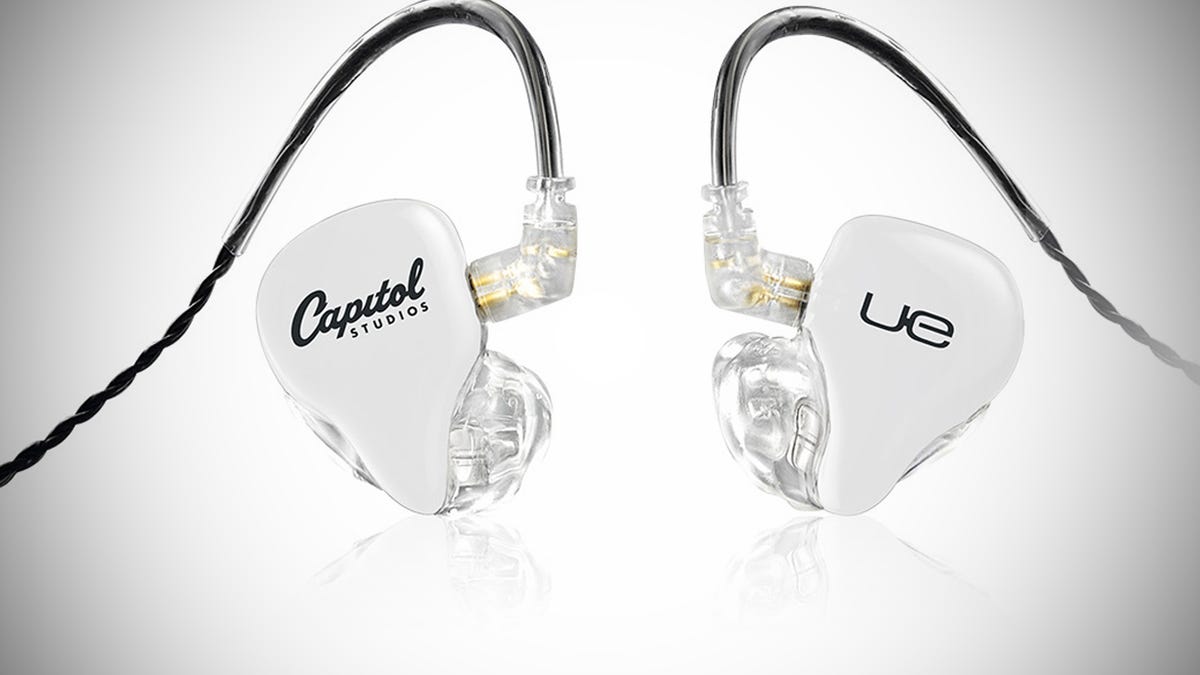For your ears only: Ultimate Ears Reference Remastered headphones
Ultimate Ears' new in-ear was designed to satisfy audiophiles and engineers alike.

"Remastered" strikes me as a funny name for a headphone, but that's exactly what the Ultimate Ears Reference Remastered is, a refinement of the original Ultimate Ears Reference Monitor I reviewed in 2010.
Each Reference Remastered earpiece is custom-made from "impressions" of your ear canals made by your local audiologist. So each set of Reference Remastered headphones is unique, and fits only your ears. A side benefit of the custom fit is superior isolation from external noise than youi'd get from everyday universal fit in-ear 'phones. The fit is secure too, the Reference Remastereds will never accidentally fall out of your ears.
Ultimate Ears Reference Remastered
To buy the headphones you'll need to first visit an audiologist who can take impressions of your ear canals, from which Ultimate Ears will make the headphones, for your ears only.
Working with the Capitol Studios recording and mastering engineers, Ultimate Ears designers fine-tuned the sound of the Reference Remastered. Spurred on by the increasing availability of high-resolution recordings, the designers wanted to update and improve on the sound of the Reference Monitor in-ear headphone. Mastering engineers have great ears -- they have to -- and their feedback shaped the Reference Remastered sound.
Ultimate Ears told me more audiophiles than pros bought Reference Monitors, but Reference Remastered sales are evenly split between audiophiles and engineers. Another interesting tidbit, Japan is by far the biggest market for Ultimate Ears headphones, and Japanese audiophiles are the most demanding on the planet.
Reference Remastered earpieces are 3D printed, and fitted with three proprietary balanced armature drivers (bass, midrange and treble) with multiple crossover points and triple-bore sound channels. Impedance is rated at 35 ohms. My Reference Remastereds came in the standard white finish, but you can get yours in nearly any color you want.
I mostly listened to the Reference Remastered with my iPhone 6S connected to a Chord Mojo digital converter/headphone amplifier. Macy Gray's new "Stripped" album's dynamic range sounded especially impressive, the sound felt very "live." The Punch Brothers' exquisite "Phosphorescent Blues" album was right up there, with Paul Kowert's stand-up bass sounding like the real thing, I could almost feel his fingers pulling on the strings. Switching over to the AKG 3003i universal fit in-ears the upper treble had an airier, more detailed sound; it's a very transparent headphone, but I missed the Reference Remastered's more substantial midrange and bass.
I also spent some time getting reacquainted with the original Ultimate Ears Reference Monitor, and it's still pretty awesome. High-res files on a Cowon Plenue M2 music player were resolutely clear and clean, but sounded more three-dimensional over the Reference Remastered. That one also sounded a little fuller, but the main difference was heard in the quiet, more subtle details, the ones lurking in the shadows. The Remastered let me hear not only the music, but hear the music played in the room it was recorded in. I kept having "oh, wow" moments as I moved through my collection of well-recorded high-res music (just because music is released in a high-res format doesn't mean it always sounds good). The original Reference Monitor sounded smaller, more contained, more close up; the Remastered opened up the soundstage and let the music "breathe" more on high-resolution DSD files of Miles Davis' classic "Someday My Prince Will Come" album.
I noted the same sort of differences with the first Crosby, Stills and Nash album in high-resolution 96 kHz/ 24-bit PCM files, the original Reference Monitor served up oodles of detail, but the Reference Remastered took the sound to the next level.
The Ultimate Ears Reference Remastered sells for $999 or £870, which I consider a very reasonable price for a custom "bespoke" product.

